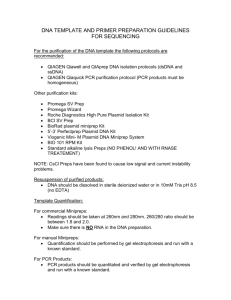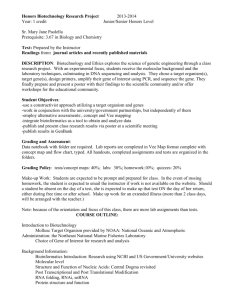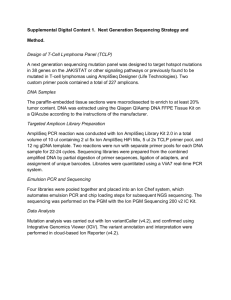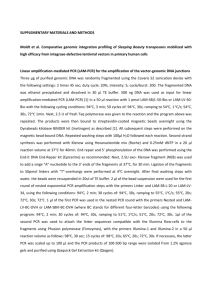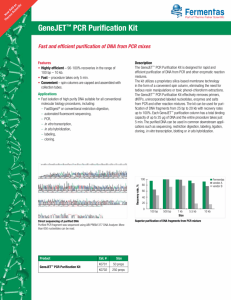Supplemental method S1
advertisement
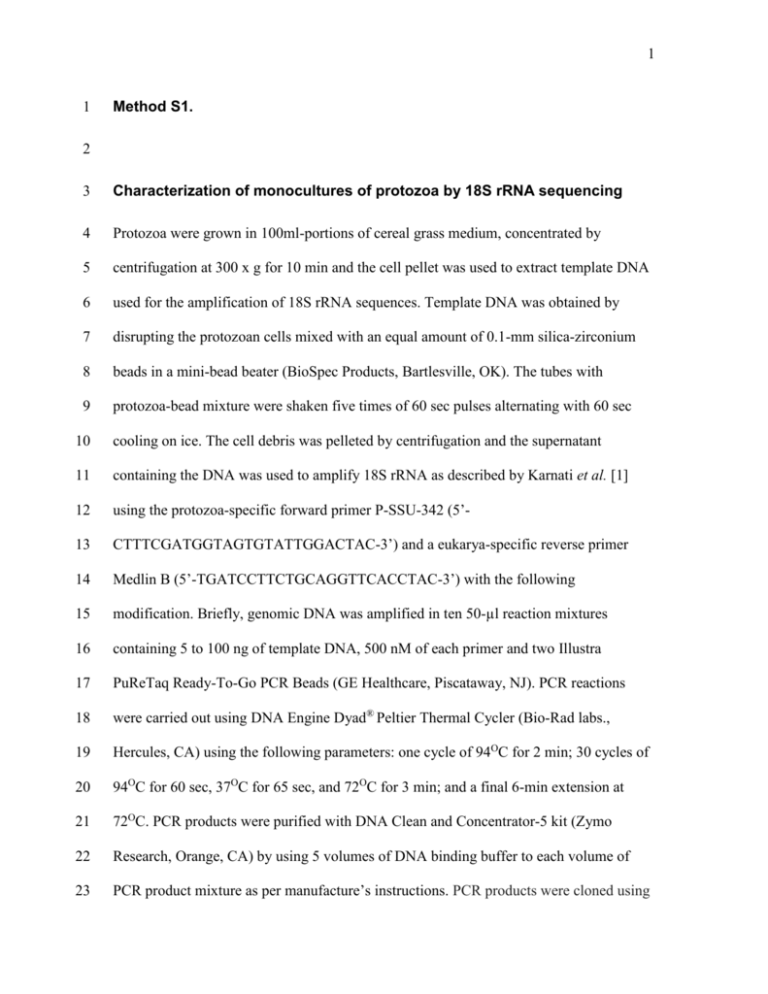
1 1 Method S1. 2 3 Characterization of monocultures of protozoa by 18S rRNA sequencing 4 Protozoa were grown in 100ml-portions of cereal grass medium, concentrated by 5 centrifugation at 300 x g for 10 min and the cell pellet was used to extract template DNA 6 used for the amplification of 18S rRNA sequences. Template DNA was obtained by 7 disrupting the protozoan cells mixed with an equal amount of 0.1-mm silica-zirconium 8 beads in a mini-bead beater (BioSpec Products, Bartlesville, OK). The tubes with 9 protozoa-bead mixture were shaken five times of 60 sec pulses alternating with 60 sec 10 cooling on ice. The cell debris was pelleted by centrifugation and the supernatant 11 containing the DNA was used to amplify 18S rRNA as described by Karnati et al. [1] 12 using the protozoa-specific forward primer P-SSU-342 (5’- 13 CTTTCGATGGTAGTGTATTGGACTAC-3’) and a eukarya-specific reverse primer 14 Medlin B (5’-TGATCCTTCTGCAGGTTCACCTAC-3’) with the following 15 modification. Briefly, genomic DNA was amplified in ten 50-µl reaction mixtures 16 containing 5 to 100 ng of template DNA, 500 nM of each primer and two Illustra 17 PuReTaq Ready-To-Go PCR Beads (GE Healthcare, Piscataway, NJ). PCR reactions 18 were carried out using DNA Engine Dyad® Peltier Thermal Cycler (Bio-Rad labs., 19 Hercules, CA) using the following parameters: one cycle of 94OC for 2 min; 30 cycles of 20 94OC for 60 sec, 37OC for 65 sec, and 72OC for 3 min; and a final 6-min extension at 21 72OC. PCR products were purified with DNA Clean and Concentrator-5 kit (Zymo 22 Research, Orange, CA) by using 5 volumes of DNA binding buffer to each volume of 23 PCR product mixture as per manufacture’s instructions. PCR products were cloned using 2 24 the TOPO TA cloning kit as per the manufacturer’s instructions and transformed into E. 25 coli TOP10F’ One Shot competent cells (Invitrogen). Two PCR reactions were 26 performed for each protozoan, and 5 clones were picked from each PCR to minimize 27 potential PCR bias. DNA templates for sequencing were prepared using the Illustra 28 Templiphi 100 amplification kit (GE Healthcare) as described by the manufacturer. 29 Sequencing reactions were performed as per the manufacturer’s instructions for the Big 30 Dye Terminator v3.1 cycle sequencing kit (Applied Biosystems, Foster City, CA) using 31 the Medlin B [1] reverse primer. Cycle sequencing reactions were purified using DyeEx 32 96 kit (Qiagen, Valencia, CA) and sequencing was carried out using an Applied 33 Biosystems 3730 DNA analyzer. DNA sequences were trimmed at both the 5’ and 3’ 34 ends to correct falsely called bases by using Lasergene SeqMan Pro (v7.0, DNASTAR, 35 Inc., Madison, WI). Only sequences with unambiguous reads of >500 bp were used; each 36 read used averaged approximately 600 bp. The compiled sequence data sets were aligned 37 with the closest sequence relatives from the GeneBank database by using Kodon (v3.5, 38 Applied Maths, Inc., Austin, TX). 39 40 41 42 43 44 45 REFERENCE 1. Karnati SK, Yu Z, Sylvester JT, Dehority BA, Morrison M, et al. (2003) Technical note: Specific PCR amplification of protozoal 18S rDNA sequences from DNA extracted from ruminal samples of cows. J Anim Sci 81: 812-815.


